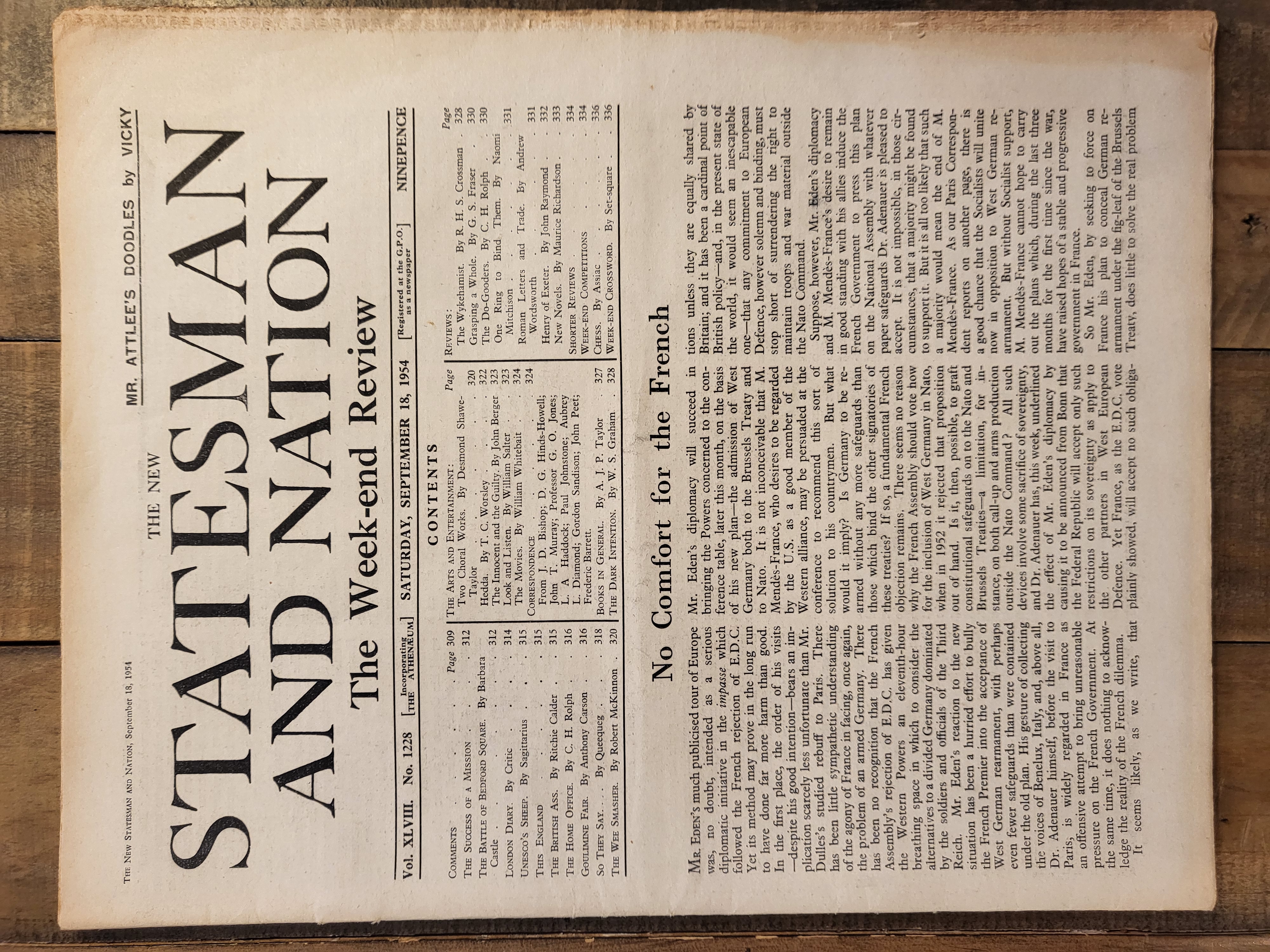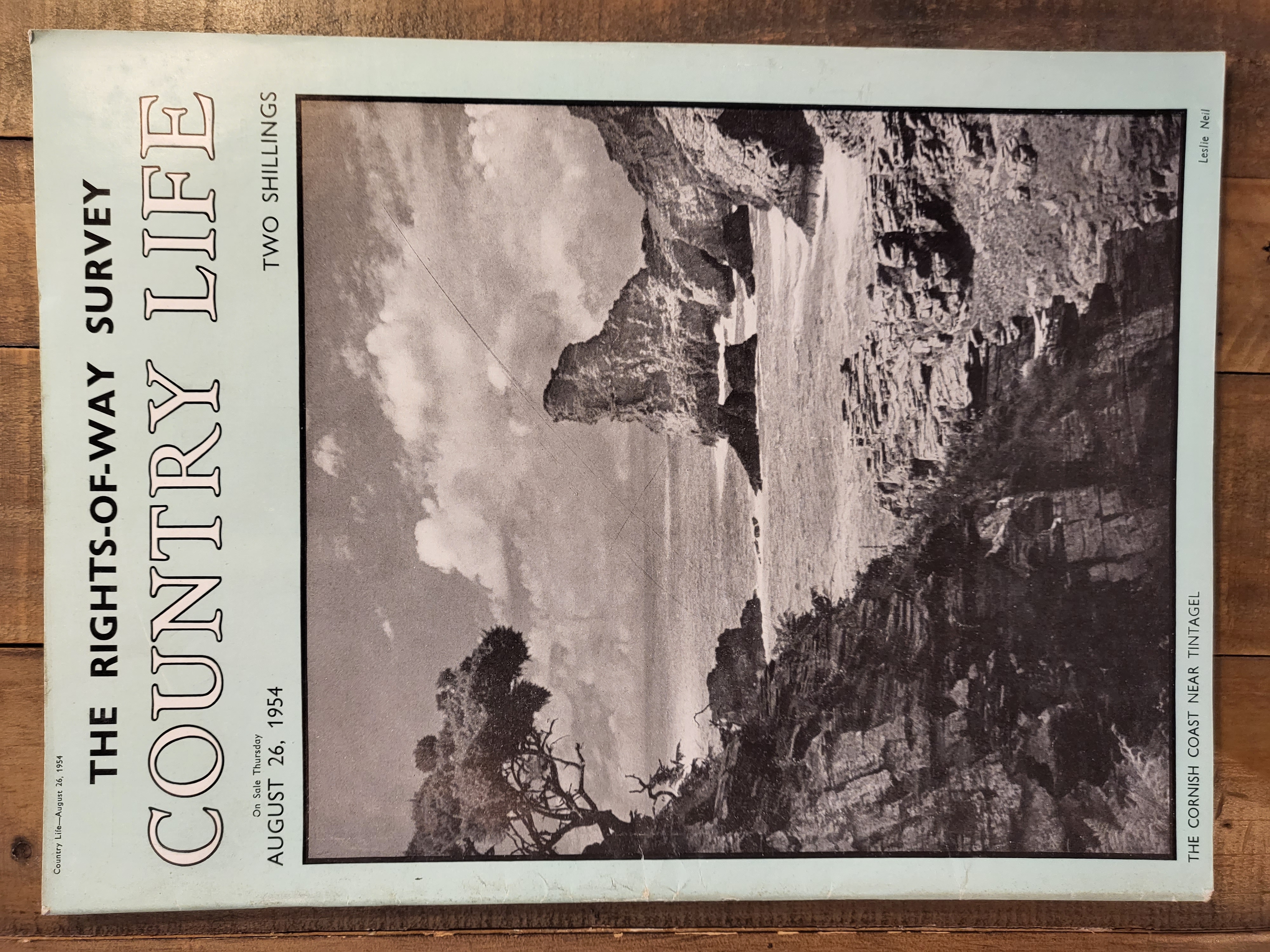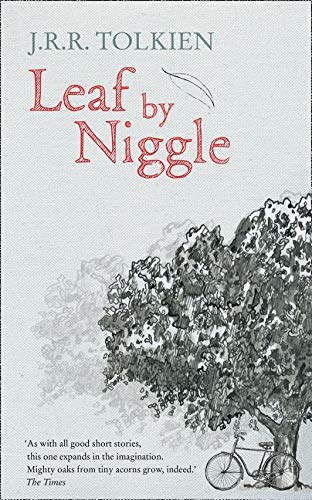northman wrote:
onthetrail wrote:
I love contemporary reviews too. One I especially like is not for the usual review reasons but because like me, R. W. Chambers hated endnotes. In fact I hate them so much that I would outlaw them if I were the lord of notes. My father was part of the "there isn't enough footnotes" brigade because like all those who love creating them, he was a academic snob ?
Chambers threw in his disgust at Tolkien’s use of them near the end of his review of Beowulf: The Monsters and the Critics in Modern Language Review, April, 1938.
Loved this despite being a lover of endnotes. Thanks for sharing.
I say it only in jest about the snobbery, though my father was a footnote snob ?
I just don't get endnotes, they are cumbersome and create unnecessary navigation.
Endnotes have their place and a definite advantage in certain cases.[1]
—————————————
1. See my discussion of "Editorial Practices" in The Nature of Middle-earth, pp. xvii-xviii.
—————————————
1. See my discussion of "Editorial Practices" in The Nature of Middle-earth, pp. xvii-xviii.

Thank you all for sharing - fascinating as always 
Two of the first items I got were the reviews of FOTR by Naomi Mitchison (in The New Statesman and Nation on 18 September 1954) and by Howard Spring (in Country Life on 26 August 1954).
The lovely thing about NM's review is that it speaks from a place where Middle-earth is already familiar (which is not surprising, considering her earlier correspondence with Tolkien and her having read page-proofs of the book in advance of publication):
"Doubtless the inhabitants of the Ice Bay of Forochel...speak something akin to the Lapp or Esquimax languages, since their inevitably similar ways of life would tend to produce a similar grammatical structure." and "Much of the book is translated from Elvish, from the Red Book of the Hobbits."
Tolkien wrote a long letter to NM just one week later (Letters no. 154) in which he thanked her for her "generous and perceptive review".
HS wrote with great elegance, saying that:
"All the mythologies of the world, all ancient folk tales and mysteries, are laid under tribute, and are marvellously blended into something new, existing in its own right." and in answer to the question of what underlies the theme of the work, he says "the answer must be the response of the reader's own heart."
Tolkien said to Rayner Unwin (Letters no. 149) that the review by HS was one which was "pleasing to ones vanity".

Two of the first items I got were the reviews of FOTR by Naomi Mitchison (in The New Statesman and Nation on 18 September 1954) and by Howard Spring (in Country Life on 26 August 1954).
The lovely thing about NM's review is that it speaks from a place where Middle-earth is already familiar (which is not surprising, considering her earlier correspondence with Tolkien and her having read page-proofs of the book in advance of publication):
"Doubtless the inhabitants of the Ice Bay of Forochel...speak something akin to the Lapp or Esquimax languages, since their inevitably similar ways of life would tend to produce a similar grammatical structure." and "Much of the book is translated from Elvish, from the Red Book of the Hobbits."
Tolkien wrote a long letter to NM just one week later (Letters no. 154) in which he thanked her for her "generous and perceptive review".
HS wrote with great elegance, saying that:
"All the mythologies of the world, all ancient folk tales and mysteries, are laid under tribute, and are marvellously blended into something new, existing in its own right." and in answer to the question of what underlies the theme of the work, he says "the answer must be the response of the reader's own heart."
Tolkien said to Rayner Unwin (Letters no. 149) that the review by HS was one which was "pleasing to ones vanity".


This is a nifty thread. I've collected a number of periodicals with reviews of LotR, etc. I don't want to take time now to do more than to mention the three issues of The Magazine of Fantasy and Science Fiction that reviewed the volumes as they came out: April 1955, August 1955, July 1956. In the April 1955 issue, Anthony Boucher hazards the guess that The Fellowship of the Ring "may be the major achievement of the year or even of the decade" among "pure" fantasy novels. In the August 1955 issue, Boucher says of The Two Towers that the story's length "makes inordinate demands upon the patience of its readers... often does so needlessly." In the July 1956 issue, Boucher allows that his problem may be a personal one [I suppose he was obliged to read a very great deal of imaginative fiction, as magazine editor], but it seems to him that "wordage seems sometimes to be protracted for its own sake, inducing mild tedium or at best an inclination to skip forward." He refers to Middle-earth repeatedly as the Middle World. He anticipates fannish debates about LotR vs. The Worm Ouroboros.
I've had this impression that apart from some staunch defenders like CSL and Auden, the reviews were overwhelmingly negative in the early days. I see the reality was more balanced than I thought.
northman wrote:
I've had this impression that apart from some staunch defenders like CSL and Auden, the reviews were overwhelmingly negative in the early days. I see the reality was more balanced than I thought.
There are a series of lists of early reviews (briefly annotated) compiled by George Thompson (or Thomson? - the material says both) and published in Mythlore in the mid-1980s - and these also indicate whether the review is positive "+" or negative "-"
Out of interest, I just did a quick count of the reviews of FOTR - discounting those which are neutral or mixed, there remain 53 reviews, of which 46 were positive and only 7 negative!
It's worth adding that I can't see any indication of how the reviews were selected.
In the August 1956 issue of Galaxy, Floyd C. Gale reviewed The Return of the King and the "trilogy": "When, after finishing a book, you continue holding the volume in limp hand, with a faraway look, you know you've had a genuine reading experience. ...The trance quality of the narrative is comparable to that other hypnotic masterpiece of fantasy, The Worm Ouroboros by E. R. Eddison -- recommendation enough."
Thirteen years ago the very small state university here purged most of its periodicals archives because (it was assumed) everything would be available in digital form. When not busy with classes or whatever, I hastened to save magazines of interest. A copy of Richard West's Tolkien bibliography was very useful. The rescued magazines were sometimes in shabby condition. Here are some highlights.
Saturday Evening Post issues with C. S. Lewis's "We Have No 'Right to Happiness'" and "Screwtape Proposes a Toast"; issue with notable J. R. R. Tolkien profile based on the interview with Henry Resnick; issues with stories by Robert Heinlein ("The Black Pits of Luna," etc.) and Ray Bradbury ("The Beast from 20,000 Fathoms," etc.); complete serial of No Blade of Grass by John Christopher.
Life magazine from 1947 with several-page feature illustrated by the great Chesley Bonestell, on manned travel to the moon; issue with lavishly illustrated feature on 2001: A Space Odyssey; some other issues of interest.
New York Times Magazine with profile of Tolkien. (This one's in notably shabby condition, but it's all there.)
Time issues with CSL material, including the 8 Sept. 1947 one with CSL on the cover (picture by Boris Artzybasheff).
New York Times Book Review and New York Herald Tribune Book Review issues with reviews of Lord of the Rings on publication of its three volumes. 1950 NYTBR with Farmer Giles review.
I think it's interesting that the NYTBR review of The Fellowship of the Ring faces a section of reviews of books "For Younger Readers." The title is "The Hero Is a Hobbit." But on the same page as Auden's review is an ad for a Skira volume on Gothic Painting. I might be reading too much into this, but it seems that the editors or layout people effected a compromise: on the one hand Tolkien's book was a fantasy about hobbits (children's literature) but on the other hand it was reviewed by Auden, who takes it seriously as a story that makes him think of Malory.
American Scholar issues with lots of interesting stuff including John Wain's memoir of C. S. Lewis in Oxford: the complete 25-year run of Joseph Epstein's editorship.
Life issues with Bonestell space art (but I was sorry to find that a 1944 issue that should have had the wonderful Saturn-as-seen-from-Titan image had been gutted!) and art from Zallinger's prehistoric animals mural at the Peabody Museum in Harvard.The dinosaur pictures probably changed my life when, as a young boy, I saw this work in one of those Golden books.Really captivating stuff at that age!
Michael Straight's LotR review in The New Republic; Edmund Wilson's "Awful Orcs" in The Nation.
I've been troubled by the thought of so many vintage magazines going to the recycler. I'm not convinced that financial realities dictate the destruction, not just by this library but by others, of so many tangible artefacts of the past. I realize that hardly one student in a thousand cares to poke around in the stacks when (s)he can access the text of an article on a computer. But I don't think what I feel is nothing but silly nostalgia. To mention only one thing, when, earlier this week, I reread No Blade of Grass in its Saturday Evening Post form, the context of this serial, with the advertisements and accompanying articles, added something to the experience. It is certainly impressed upon one, how the novel was published during a time of anxieties about the prospect for civilization and decency given the possibility of nuclear war. I also have concerns about the susceptibility of digitized texts to manipulation by those who would edit our sense of the past.
And see Nicholas Baker's Double Fold about librarians' "war on paper" -- and that's a book around 20 years old now.
Saturday Evening Post issues with C. S. Lewis's "We Have No 'Right to Happiness'" and "Screwtape Proposes a Toast"; issue with notable J. R. R. Tolkien profile based on the interview with Henry Resnick; issues with stories by Robert Heinlein ("The Black Pits of Luna," etc.) and Ray Bradbury ("The Beast from 20,000 Fathoms," etc.); complete serial of No Blade of Grass by John Christopher.
Life magazine from 1947 with several-page feature illustrated by the great Chesley Bonestell, on manned travel to the moon; issue with lavishly illustrated feature on 2001: A Space Odyssey; some other issues of interest.
New York Times Magazine with profile of Tolkien. (This one's in notably shabby condition, but it's all there.)
Time issues with CSL material, including the 8 Sept. 1947 one with CSL on the cover (picture by Boris Artzybasheff).
New York Times Book Review and New York Herald Tribune Book Review issues with reviews of Lord of the Rings on publication of its three volumes. 1950 NYTBR with Farmer Giles review.
I think it's interesting that the NYTBR review of The Fellowship of the Ring faces a section of reviews of books "For Younger Readers." The title is "The Hero Is a Hobbit." But on the same page as Auden's review is an ad for a Skira volume on Gothic Painting. I might be reading too much into this, but it seems that the editors or layout people effected a compromise: on the one hand Tolkien's book was a fantasy about hobbits (children's literature) but on the other hand it was reviewed by Auden, who takes it seriously as a story that makes him think of Malory.
American Scholar issues with lots of interesting stuff including John Wain's memoir of C. S. Lewis in Oxford: the complete 25-year run of Joseph Epstein's editorship.
Life issues with Bonestell space art (but I was sorry to find that a 1944 issue that should have had the wonderful Saturn-as-seen-from-Titan image had been gutted!) and art from Zallinger's prehistoric animals mural at the Peabody Museum in Harvard.The dinosaur pictures probably changed my life when, as a young boy, I saw this work in one of those Golden books.Really captivating stuff at that age!
Michael Straight's LotR review in The New Republic; Edmund Wilson's "Awful Orcs" in The Nation.
I've been troubled by the thought of so many vintage magazines going to the recycler. I'm not convinced that financial realities dictate the destruction, not just by this library but by others, of so many tangible artefacts of the past. I realize that hardly one student in a thousand cares to poke around in the stacks when (s)he can access the text of an article on a computer. But I don't think what I feel is nothing but silly nostalgia. To mention only one thing, when, earlier this week, I reread No Blade of Grass in its Saturday Evening Post form, the context of this serial, with the advertisements and accompanying articles, added something to the experience. It is certainly impressed upon one, how the novel was published during a time of anxieties about the prospect for civilization and decency given the possibility of nuclear war. I also have concerns about the susceptibility of digitized texts to manipulation by those who would edit our sense of the past.
And see Nicholas Baker's Double Fold about librarians' "war on paper" -- and that's a book around 20 years old now.
That's a great and noble effort Dale Nelson.
I couldn't agree more about the significance and interest of such items, as tangible artefacts. The eye is often drawn to adjacent articles and even the ads are an eye opener.
As you say, placement can be interesting too - and you can see how much of a reputation the books had already gained, by the full-page spread given to Auden's review of ROTK in the NYTBR, compared with the modest length of The Hero is a Hobbit.
I couldn't agree more about the significance and interest of such items, as tangible artefacts. The eye is often drawn to adjacent articles and even the ads are an eye opener.
As you say, placement can be interesting too - and you can see how much of a reputation the books had already gained, by the full-page spread given to Auden's review of ROTK in the NYTBR, compared with the modest length of The Hero is a Hobbit.
My periodicals rescues included about a dozen Times Literary Supplement issues with items of Tolkienian interest, e.g. a display ad from Allen and Unwin prompted by Tolkien's death (14 Sept. 1973 issue), review of The Silmarillion (30 Sept. 1977), front-page review of Paul Kocher's Master of Middle-earth, with cartoon of Tolkien in pyjamas surrounded by diminutive folk (8 June 1973), etc.









 4307
4307 1.95M
1.95M